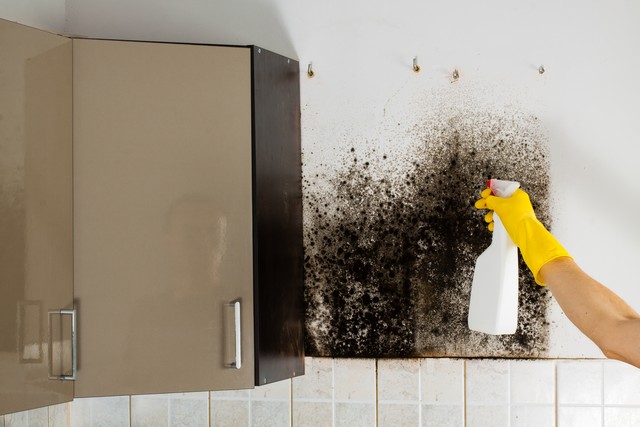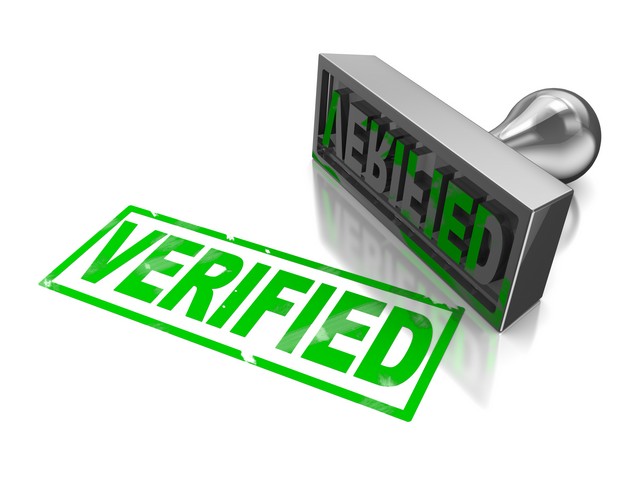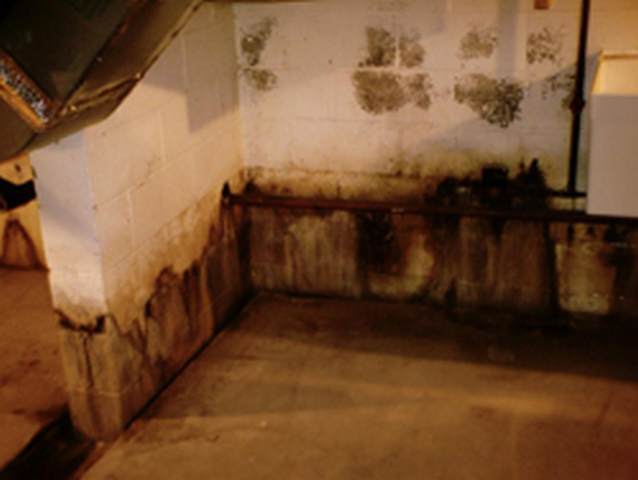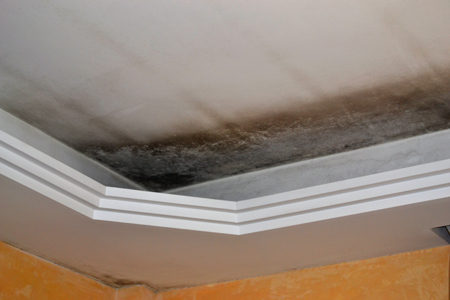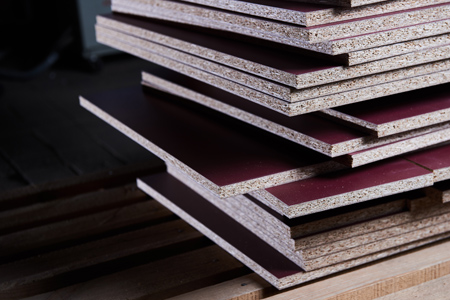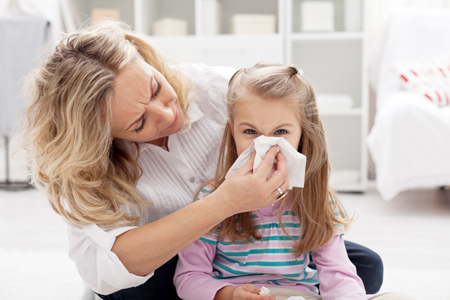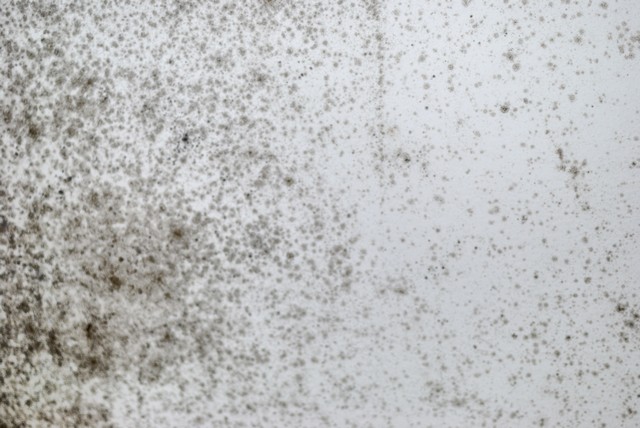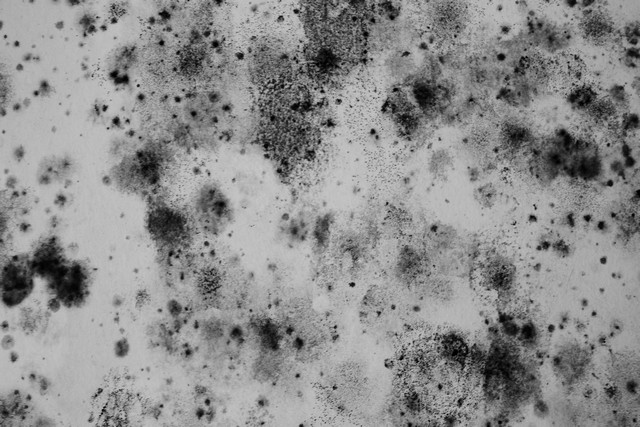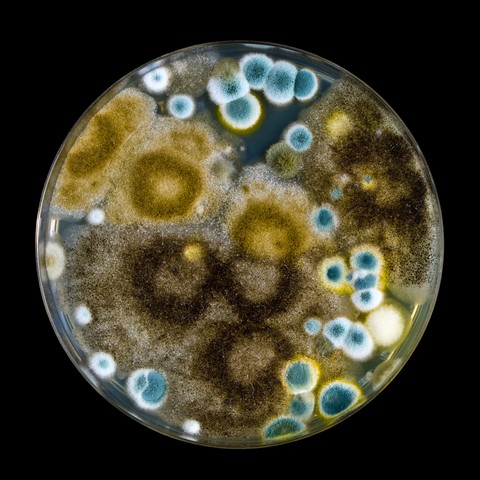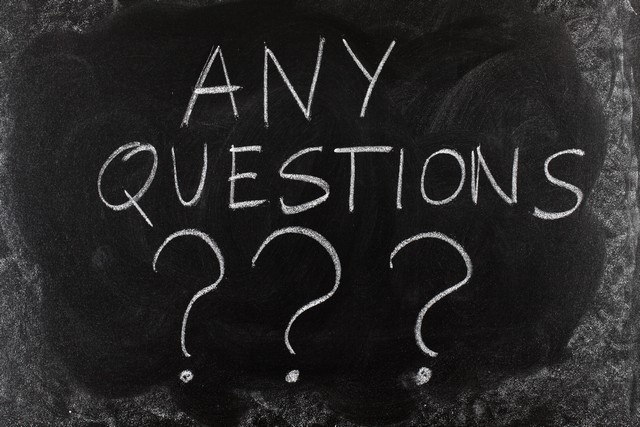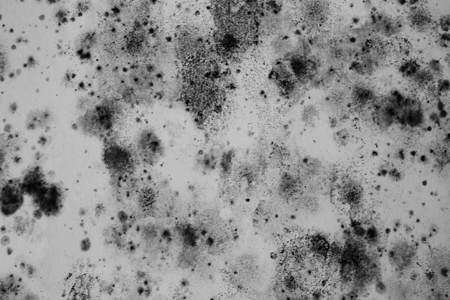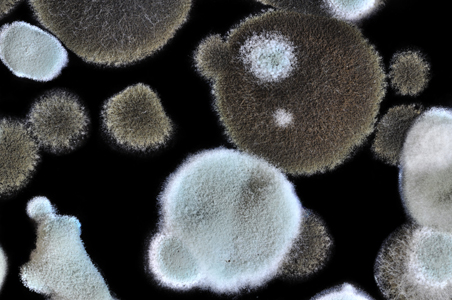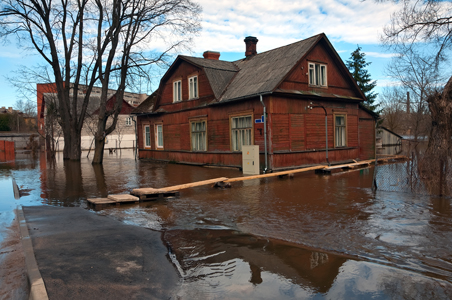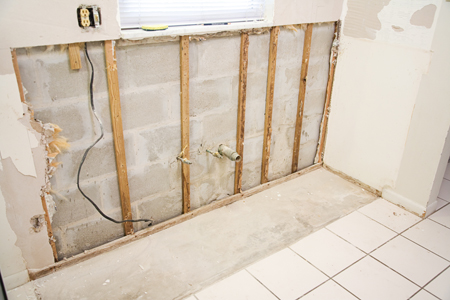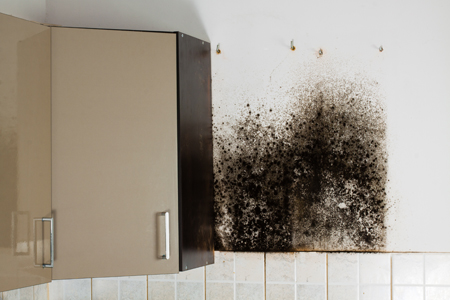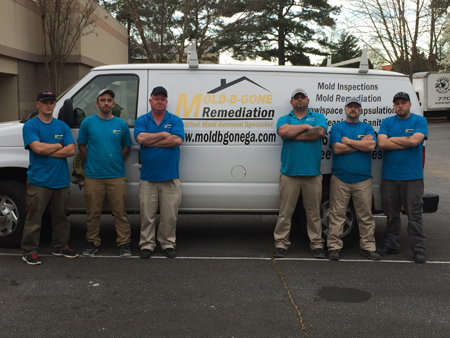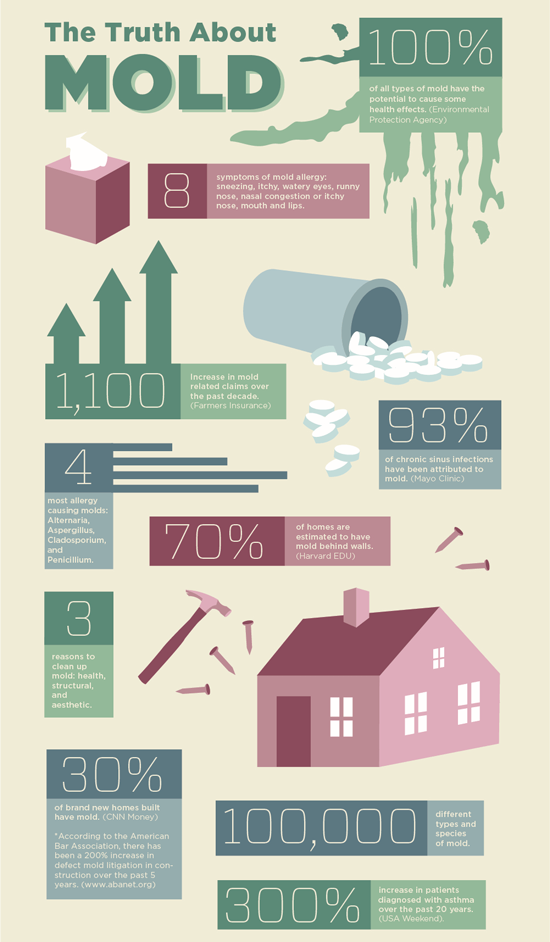
by Eric Brown | Oct 6, 2017 | black mold removal Atlanta, black mold removal Georgia, Bleach and Mold, Can Mold Kill?, Commercial Mold Remediation, Commercial Mold Removal, Dead Mold Spores, Health, Homeowner Tips, How Toxic Is Mold?, Indoor Air Quality, Killing Mold, Mold Facts, Mold Information, Mold Inspection, Mold Remediation, Mold Removal, Mold Removal Cost, Stachybotrys Black Mold, Toxic Mold
How Qualified Is Your Mold Removal Contractor?
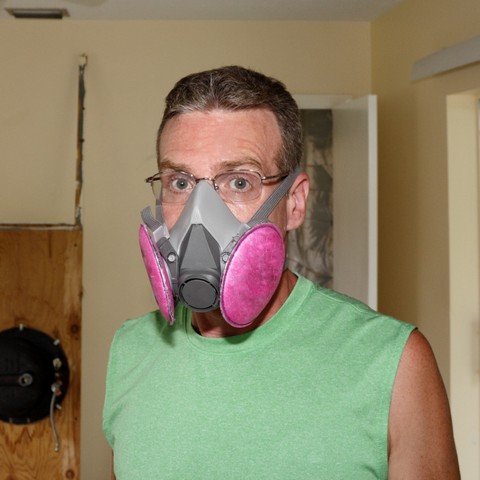
How Qualified Is Your Mold Removal Contractor?
One of the goals of Mold B Gone is to help customers in the Atlanta, Georgia area with their indoor air quality needs. We specialize in mold removal and are considered one of the best companies in our area for mold remediation.
The core problem with this industry is the fact that there is not much regulation, which means that any contractor can offer mold inspection or mold removal services.
Some states require licensing, which is great, but if you live in an area without licensing requirements, this can create an atmosphere where unskilled, inexperienced, and untrained contractors can offer mold removal services.
This creates a situation where a simple mold problem could be made worse because the contractor did not know what they were doing.
So, how do you know if the contractor you call is qualified to remove mold from your home or business?
The purpose of this article is to list and explain the top 10 clues that the mold removal contractor you called may not have the training or experience to properly remediate your mold problem.
#1: The Contractor Concludes You Have Mold Without Providing A Valid Explanation Or Investigation Further!
Really? How does the contractor know? You know there is a problem if the contractor claims you have mold without doing any testing of the area.
#2: The Contractor Fails To Explain How They Will Test For Evidence Of Mold!
Since there are many different kinds of tests, you need someone who uses the right kind of test to assess whether you have a problem.
Tape testing, swab testing, air quality, and ERMI testing are some tests that are used to determine if you have a mold problem. Make sure that you work with a qualified mold inspection specialist who understands how to test whether or not you have a mold problem so that a proper protocol can be put in place.
This is important! Without the right kind of test, at the end of the job, you won’t know if the mold problem was properly rectified.
#3: The Contractor Does Not Want Their Work To Be Verified By A Third Party!

#3: The Contractor Does Not Want Their Work To Be Verified By A Third Party!
If you begin working with a contractor and they do testing and find mold, make sure you ask them how the quality of their work will be verified.
We recommend that you get a Pre-Test and a Post-Test. The purpose of the Pre-Test is to measure the spore count inside of the property and compare it to outdoor levels. This is done using specialized equipment that takes samples of both the indoor and outdoor air. The samples are then sent to an accredited laboratory to be analyzed. The lab will then issue a report documenting the spore count and the mold species that is found in both the indoor and outdoor samples. Once this data is determined, the contractor should explain to you what mold spores were found in your home or business and how it compares to the outside. If there is a huge difference and the spore count indoors is higher than outdoors, then you will have some pertinent information to compare to the Post-Test once the work is complete.
The purpose of the Post-Test is to do the same as the Pre-Test. In this case, however, the spore count indoors should be close to or equal to the outdoor spore count. If the data shows this, then the indoor fungal ecology of the home is healthy. The Post-Test, in short, verifies that the mold remediation was successful.
When you decide to work with a contractor make sure you understand what they will do to restore the fungal ecology of your home to healthy levels. Reputable contractors will provide you with the lab results of the Pre and Post tests and will offer you the option of using a Third Party to do the Post Test should you choose to do this.
Pre and Post testing is like a check and balance system, meaning someone else is checking the efficacy of the work. Without this test, you will never know if the mold removal was successful.
To summarize, here are the three key reasons you should invest in Pre and Post testing:
- So you know if you have a problem that actually needs remediation. Testing will verify this!
- So that you know at the end of the job a clearance test tells you if you got what you paid for. A lot of times mold damage is clearly evident, so it’s okay to waive the first test. However, the final clearance test provides protection from mold scams and peace of mind that your home or business is safe.
- Finally, because it’s part of the IICRC recommended standard for mold removal!
#4: The Contractor Gives You A Price Quote Without Doing A Formal Site Inspection!
Believe it or not, some contractors will give you a quote over the phone without even visiting your home or business.
If you get a price over the phone, definitely stay away from this contractor for two key reasons:
- One of the goals of reputable mold removal contractors is to identify the moisture source that is causing the problem. How can a contractor provide a quote without knowing this?
- Most importantly, how can a quote be provided unless an actual site visit and inspection is done to know the full extent of the mold damage.
#5: The Contractor Refuses To Provide Evidence Of Training!
Before you commit to working with any mold removal contractor, always ask if they have specialized training. Mold removal is considered a profession because professionals invest in specific training through organizations like the IICRC, RIA, CMRS, etc. Always find out about the training and experience. In fact, in a previous blog, we listed 10 questions you should always ask to pre-screen prospective contractors you want to hire.
#6: The Contractor Does Not Provide You With A Detailed Estimate!

#6: The Contractor Does Not Provide You With A Detailed Estimate!
You should never work with a contractor that gives you a one line estimate that simply states “mold removal” and then the “price”. Demand a detailed written estimate so you know exactly what you are paying for.
If you don’t demand a detailed estimate you may face other charges when the contractor shows up to do the job. Some contractors provide minimal detail in the estimate because they want to up-sell or up-charge you for other work.
There are some cases when unforeseen issues on a property present themselves after a job starts. But a detailed written estimate before you sign the contract outlines what will be done on the basis of a professional assessment. The estimate and contract protects both the contractor and the property owner because it clearly states the limitations (i.e., what will and won’t be done) before the work starts.
#7: The Contractor Wants 100% Of Payment Before The Job Starts!
If you are comfortable with the contractor and have properly pre-screened and done your due diligence and have a signed contract, you may be asked for a deposit to cover some of the costs for doing your mold removal job.
However, if the contractor asks for 100% of the payment up front, you may want to re-consider hiring this contractor because you will have very little recourse if the job is not done right.
We recommend that the final payment be made once all the work, according to the signed contract, is complete and you have a successful Post-Clearance test that assures you that the job was done properly and the indoor air of your home or business is healthy.
#8: The Contractor Gives You An Unbelievable Low Price!
Mold removal can be costly because professionals follow detailed steps to ensure that it is done properly and to avoid contaminating other areas of your property.
If you get three estimates and one estimate is a lot lower than the others, keep in mind that “you get what you pay for”. In short, the cheapest price is not the best indicator of competent service. Rather, it usually indicates the reverse.
#9: The Contractor Attempts To Pressure You Into Making A Decision Using Scare Tactics!

#9: The Contractor Attempts To Pressure You Into Making A Decision Using Scare Tactics!
Finding mold in your home or business can be scary. Because of this, some contractors behave like predators, using scare tactics to close the sale on their next potential victim.
The key point to remember if you find mold is not to panic or get to stressed out. Stay focussed on finding the best trained contractor to deal with your mold concerns.
It is important to understand that we are surrounded by mold all the time because it is in our environment and part of the eco-system to break down dead organic material. Mold is nature’s recycler and will always be a problem when it is growing indoors because the spore counts will increase to unhealthy levels.
If you suspect you have mold and contact a contractor, be sure to ensure that you get all the information in order to make a sound decision! This is very important; if you do have mold, you want to ensure that it is removed the right way the first time by a mold removal professional who knows what they are doing.
If you are pressured into making a quick decision and not encouraged to seek other estimates or given time to do your due diligence, then be careful, particularly, if in order to close the sale, the contractor resorts to pressure tactics or scare tactics.
Any contractor that uses pressure or scare tactics without providing you with evidence from testing and/or does not try to determine the cause of your mold problem may just be trying to pressure you into a quick sale.
#10: The Contractor Recommends Bleach!
Avoid mold removal contractors that recommend the use of bleach for your mold removal job. Bleach does not work and is not recommended by experienced industry professionals.
We do not recommend bleach for three key reasons:
- Bleach does not address the cause of the mold problem!
- Bleach is dangerous!
- Bleach evaporates!
For an in depth explanation why we do not recommend bleach, read this article: Killing Mold Is Not The Answer!.
Now that you understand some of the tactics used by unqualified or unscrupulous contractors to try to get business, let’s look at the five key steps you can take to protect yourself…
How To Choose A Professional Mold Removal Contractor?

How To Choose A Professional Mold Removal Contractor?
The best way to ensure that you choose an experienced professional is to ask questions and educate yourself!
- Find out what training the contractor has received and from what organization.
- Ask if the contractor recommends Pre and Post testing.
- Get a detailed mold removal action plan, often referred to as the Scope of Work. The report will guide the remediation activities of the mold damage restoration.
- Once you have that indoor air quality test result, get a written, detailed estimate describing the mold damage restoration project.
- Finally, it’s a good idea to get 3 different bids from 3 different contractors. This way you’ll know the price range for the project. If you get an extremely low bid, make sure you compare apples to apples. If a price seems too good to be true, it usually is. The risk of a low bid is that proper attention to detail won’t be followed. Proper attention to detail includes things like creating containment and following proper procedures for removing contaminated materials from the property. These two steps prevent contamination to the rest of the property.
One final point. Mold will only grow if there is moisture, ie. a water source. The key to long lasting mold prevention is to first identify the source of moisture. With this in mind, make sure you hire a contractor who will do this before any mold remediation activities begin. If the source of the moisture isn’t identified and corrected any mold removal activities will be wasted effort.
Got Mold Removal Questions?

Got Mold Removal Questions?
Mold B Gone, is dedicated to helping homeowners and business owners in the Atlanta, Georgia area. One of the reasons we are so passionate about education is we know that an informed consumer will be able to make better and informed decisions. We have built a reputation of trust in our service area because of our focus on education and our guarantee.
When you have questions about mold removal, don’t hesitate to send us an e-mail or call our experts at 678-697-6267. Peace of mind is just a phone call away!

by Eric Brown | Sep 22, 2017 | Attic Mold, Basement Mold, Beware Of Mold When Buying A Home, black mold removal Atlanta, black mold removal Georgia, Bleach and Mold, Can Black Mold Poison You?, Can Mold Kill?, Chronic Fatigue Syndrome (CFS), Chronic Inflammatory Response Syndrome (CIRS), Commercial Mold Remediation, Commercial Mold Removal, Crawlspace Mold, Dead Mold Spores, Health, How Toxic Is Mold?, Indoor Air Quality, Killing Mold, Mold and Asthma, Mold and Chronic Fatigue Syndrome, Mold and Depression, Mold and Genes, Mold and Infants, Mold and Multiple Sclerosis, Mold and Parkinson's Disease, Mold and Pets, Mold and Pregnant Women, Mold and Sids, Mold and Sinusitis, Mold Facts, Mold In Apartment, Mold In Schools, Mold Information, Mold Inspection, Mold Remediation, Mold Removal, Mold Removal Cost, Mold Sensitized Customer Testimonial, Mold Sensitized Success Story, Stachybotrys Black Mold, Toxic Mold
September Is Mold Awareness Month!

Top 10 Reasons You Need To Be Aware Of Mold!
September 2017 marks the 9th annual Mold Awareness Month started by the National Indoor Mold Society:
“The purpose of National Indoor Toxic Mold Awareness Month is to inform, educate, and raise awareness about the adverse health effects due to exposure of indoor molds and mycotoxins.” (Executive Director, Letitia Peters)
According to Michael Pinto:
“The reason that mycotoxins are suspected of poisoning people is based on both science and observational connections. “Mycotoxin” is the term that scientists use for a variety of chemical compounds that are produced by fungi during their growth cycle (the official term for mycotoxins is “secondary metabolites”). The suffix toxin is found at the end of the word mycotoxin because a great number of these mold-produced chemicals have been proven to be poisonous to both insects and animals—including people.”
One of the goals of Mold B Gone is to educate consumers in the Atlanta, Georgia area about mold. We believe that every month should be mold awareness month. Since launching this site, we have had nearly 68,000 views from individuals interested in learning more about mold.
There are three key lessons you need to know about mold:
- Mycotoxins kill other things, like bacteria and viruses, so mold can continue to grow.
- Mold spores, whether dead or alive, can cause adverse health effects.
- There is no practical way to eliminate all molds and mold spores in the indoor environment; the way to control indoor mold growth is to control moisture.
Considering that some molds, like Stachybotrys chartarum and Aspergillus, produce myctoxins that cause sickness, the purpose of this article is to list and explain the top 10 reasons you need to be aware of mold.
#1 Mold Needs Less Than 2 Days To Begin Growing!

#1 Mold Needs Less Than 2 Days To Begin Growing!
Mold requires three key ingredients to grow:
- Food: wood & wood products; paper and other paper products like cardboard and wallpaper; leather; fabric and upholstery; grout; painted walls; cement; plaster (drywall); ceiling tiles; insulation materials; and carpet.
- The ideal temperature of 41 degrees to 100 degrees Fahrenheit; and
- Moisture, the key ingredient.
In the presence of moisture, the ideal temperature, and ample food, mold will begin growing within 24 to 48 hours. This is the reason that water damage restoration is so important during a flood event!
#2 Mold Causes Chronic Sinusitis!

#2 Mold Causes Chronic Sinusitis!
According to Doctors at the Mayo Clinic, David Sherris, Eugene Kern, and Jens Ponikau, chronic sinusitis is caused by a fungus and is an immune reaction:
“Medications haven’t worked for chronic sinusitis because we didn’t know what the cause of the problem was. Fungus allergy was thought to be involved in less than ten percent of cases. Our studies indicate that, in fact, fungus is likely the cause of nearly all of these problems. And it is not an allergic reaction, but an immune reaction. This is a potential breakthrough that offers great hope for the millions of people who suffer from this problem. We can now begin to treat the cause of the problem instead of the symptoms. Finally we are on the trail of a treatment that may actually work.”
This conclusion was based on a research study of 210 patients with chronic sinusitis. The Doctors collected mucus samples from the patients’ noses and discovered fungus in 96 percent of the patients. In addition, they identified 40 different kinds of fungi, averaging out to 2.7 types per patient.
Further research was done on 101 of these patients by removing nasal polyps. What they found were eosiniphils, which are which blood cells activated by the immune system in the nasal tissue of the patients. The Doctors believe that this discovery shows that the body’s immune system is sending the eosinophils to attack the fungi which is what is causing the irritation and inflammation of the membranes of the nose. For this reason, they do not believe that traditional treatments work because they do not address the root cause of the problem, fungi, which will continue to irritate the nose membranes.
#3 Your Home Is A Buffet For Mold!

#3 Your Home Is A Buffet For Mold!
Mold is nature’s recycler, it’s main purpose in our eco-system is to break down dead organic material.
In the outdoors, the relative number of spores is small enough not to cause significant harmful health effects for most people.
However, indoors, once mold begins to grow, it will cause health concerns because the spore counts will increase. Indoor air quality is a critical concern, particularly in hot and humid climates like Georgia because residents tend to stay indoors more and use their air conditioners for heat relief.
The problem with mold is the fact that most homes are made out of the material that it loves to eat. A home is an “all you can eat buffet” for mold because homes are constructed using dead organic materials: wood & wood products; paper and other paper products like cardboard and wallpaper; leather; fabric and upholstery; grout; painted walls; cement; plaster (drywall); ceiling tiles; insulation materials; and carpet.
#4 Mold Causes Asthma!

#4 Mold Causes Asthma!
“Infants who are exposed to mold in their living environments have nearly a three times greater risk of becoming asthmatic than those who did not have extensive mold exposure in their first year of life.” (Medical Evidence that Connects Mold Exposure to Illness Keeps Piling Up)
According to Medical News Today, asthma affects 300 million people in the world and more than 22 million Americans. Although people of all ages suffer from the disease, it most often starts in childhood, currently affecting 6 million children in the US. Asthma kills about 255,000 people worldwide every year.
Asthma is a respiratory condition marked by spasms in the bronchi of the lungs, causing difficulty in breathing. According to WebMD, no one really knows what causes asthma, but what is known is that it is a chronic inflammatory disease of the airways. Trigger and causes of asthma include allergies, tobacco smoke, environmental factors, obesity, genetics, and other factors.
According to Michael Pinto, CEO, of Wonder Makers Environmental, there is mounting evidence pointing to the link between mold and asthma.
To learn more about the link between mold and asthma, including legal evidence and research studies, click here.
#5 The Core Problem With Mold Is That It Can Grow Undetected!

#5 The Core Problem With Mold Is That It Can Grow Undetected!
Most people do not realize they have a mold problem because it is hidden.
Mold can be detected through smell, visual clues, and knowledge of the building history, ie. was there a flood or indoor leak.
One of the first signs that you have a mold problem will be a “musty” or “mildewy” odor.
The next step is to determine where the smell is coming from.
The seven areas of the home that you will likely find mold includes the following: bathrooms and kitchen that have leaks under the sink; leaks behind appliances (refrigerator, dishwater, and washing machine); ceilings and walls where there are water leaks; window sills and around the windows where condensation accumulates; your basement; closets; and crawl spaces.
#6 Modern Day Building Practices Promote Mold Growth!

#6 Modern Day Building Practices Promote Mold Growth!
The rush to make quick money and high profits by real estate developers has created a disaster waiting to happen because new homes built today are more susceptible to mold growth.
- The quest to reduce energy bills means that many new homes are air tight and lack proper ventilation, conducive to mold growth.
- The season that the home was built is also a factor. For instance, if the home was built during a period when there was lots of rain and the foundation was not allowed to completely dry before installing the insulation and vapor barrier, then moisture could be trapped behind the walls.
- Building practices have changed. In the past, most homes were built with non-porous materials like plywood and timber which made it difficult for mold to penetrate the surface. Today, cost conscious builders use Orient Strand Board (OSB) and particle board which are porous and susceptible to mold growth.
According to the MOLDY documentary, at least 50 percent of homes in the United States have water damage issues caused by water line leaks, tears in moisture vapor barriers, leaky showers, condensation under eaves, and water pooling in crawl spaces. It is this water damage which causes mold to grow.
Improving building practices to prevent moisture issues is the single most effective way to prevent mold.
#7 25% of the Population Is Susceptible To Mold Illness!

#7 25% of the Population Is Susceptible To Mold Illness!
According to Dr. Richie Shoemaker, physician and expert in the field of biotoxin-related illness and author of the book Surviving Mold, 1 in 4 people have a genetic pre-disposition to the mold illness, Chronic Inflammatory Response Syndrome (CIRS):
“Genes made them prime targets for an assault by their own innate immune systems….exposure to the interior environment of a Water-Damaged Building (WDB), [causes] an innate immune response that is going haywire.”
Individuals exposed to the toxins in a water damaged building suffer from chronic illness because their bodies are trying to eliminate the foreign substances that stay in the body resulting in chronic inflammation and multiple symptoms.
It is difficult to diagnose CIRS because there are 37 symptoms patients could suffer from: fatigue; weakness; aches; muscle cramps; unusual pain; ice pick pain; headache; light sensitivity; red eyes; blurred vision; tearing; sinus problems; cough; shortness of breath; abdominal pain; diarrhea; joint pain; morning stiffness; memory issues; focus/concentration issues; word recollection issues; decreased learning of new knowledge; confusion; disorientation; skin sensitivity; mood swings; appetite swings; sweats (especially night sweats); temperature regulation or dysregulation problems; excessive thirst; increased urination; static shocks; numbness; tingling; vertigo; metallic taste; and tremors.
#8 Mold Will Reduce Your Property Value!

#8 Mold Will Reduce Your Property Value!
“Mold is a serious issue. If you leave it untreated, it continues to grow. It leads to respiratory illness and it rots the wood, leaving the property valueless.” (Ian Schlake of Respond and Rebuild)
Like a parasite or cancer, mold will continue to grow as long as there is a food source, moisture, and the right temperature.
The only way to stop mold is to address the moisture source to prevent future mold growth and then remove the contaminated porous materials. Effective, long lasting mold remediation is based upon identifying the source of contamination and ensuring it is fixed.
Failing to fix the underlying causes of the mold and effectively removing the mold will lead to reduced property values caused by structural damage as the mold continues to feed on the home.
#9 Mold Remediation Can Be Costly!

#9 Mold Remediation Can Be Costly!
As mentioned in an earlier article, the cost of mold remediation will depend on three key factors:
- How much of the area is infected with mold?
- What kind of materials are infected?
- How easy is it to access the mold?
On average, the typical household mold removal project will range from $2,000 to $6,000, but can be as high as $30,000 or more depending on the extent of contamination.
The core problem with the mold remediation industry is any contractor can offer mold removal services…so it is truly “Buyer Beware.” Because of the lack of regulation, many contractors believe they can offer mold removal services without the proper training or experience. To stay competitive, these contractors may offer “quick fix” solutions that focusing on killing the mold. However, as stated by Michael Pinto:
“Killing mold, but leaving the residue in place, is not acceptable. Since many health impacts can be triggered by exposure to both live and dead mold spores, the source and secondary contamination must be removed.” (MOLD INDOORS: Killing it is Not Enough)
Killing mold is not the answer because it is not a permanent solution to a mold problem. Professional mold removal contractors will follow an eight step process to ensure that your mold problem is fixed properly and will back up their work with a guarantee.
Don’t pinch pennies when you encounter a mold problem, the cheapest estimate may not necessarily be the best one. Do your due diligence, ask questions, get references, and most importantly avoid contractors that offer you magical solutions that involve just spraying a chemical to kill the mold dead.
#10 Mold Sickness Is A Hidden Epidemic!

#10 Mold Sickness Is A Hidden Epidemic!
According to the producers of the MOLDY documentary released earlier this year, most Physicians do not understand or have the knowledge to properly diagnose patients with mold sickness:
“Possibly every doctor in the United States is treating mold illness, and they just don’t realize it.” (Dr. Scott McMahon, MD)
Since most physicians are not trained to treat and identify mold illness, their patients continue to suffer in silence, mis-diagnosis, and a vicious cycle of numerous visits to different doctors and specialists that do not understand why they are sick.
Considering the statistics revealed in the MOLDY documentary it is not surprising that mold sickness is now considered a hidden epidemic.
- At least 45 million buildings in the United Stats have unhealthy levels of mold.
You have a 33% chance of being exposed to toxic mold when you move into a new home, apartment or office. The documentary also emphasizes the fact that many foods are contaminated with mold, including corn, peanuts, and coffee.
- Approximately 28 percent of the population have genes that make them highly susceptible to mold-related health issues.
- Despite the fact that mold is a significant health concern, like lead and asbestos, there are no federal environmental protections laws.
Mold is a hidden epidemic because it makes people sick and they do not know that mold is the cause!
Got Mold Questions?
Mold B Gone has been serving the Atlanta, Georgia area since 2009. We are experts at detecting and removing mold and specialize in serving the needs of mold sensitized customers. If you have a mold question or concern, please call 678-697-6267, or send us an e-mail. Peace of mind is just a phone call away!

by Eric Brown | Aug 31, 2017 | 37 Symptoms Associated With Mold Illness, Attic Mold, Basement Mold, Beware Of Mold When Buying A Home, black mold removal Atlanta, black mold removal Georgia, Can Black Mold Poison You?, Can Mold Kill?, Commercial Mold Remediation, Commercial Mold Removal, Crawlspace Mold, Dead Mold Spores, Health, Indoor Air Quality, Killing Mold, Mold Facts, Mold Information, Mold Inspection, Mold Remediation, Mold Removal, Questions and Answers, Stachybotrys Black Mold, Toxic Mold
What Is Stachybotrys?

What Is Stachybotrys?
Stachybotrys molds decay organic matter. The most common species, Stachybotrys chartarum, sometimes referred to as Stachybotrys atra often grows indoors.
Ideal conditions for Stachybotrys growth include moisture, a nutrient/food source, temperature, and time. Ideal humidity for this black mold is a relative humidity of 90% or higher for it to begin the germination growth process. Stachybotrys feeds on materials with a high cellulose content such as hay, straw, wood chips, and building materials such as ceiling tile, drywall, paper vapor barriers, wallpaper, insulation backing, cardboard boxes, and paper files.
Stachybotrys Is The King Of Molds!

Stachybotrys Is The King Of Molds!
Stachybotrys is considered the King of Molds because it will develop into the dominant mold group if the conditions are favorable and will crowd out the other molds that began feeding on the material first.
This happens because unlike other molds like Aspergillus, Penicillium, and Cladosporium which begin growing within one to two days, Stachybotrys takes one to two weeks to begin growing.
How Does Black Stachybotrys Mold Spread?

How Does Black Stachybotrys Mold Spread?
When Stachybotrys mold is growing on wet material, the spores do not disperse as easily because the spores are held together by a sticky/slimy coating. However, when the material dries out or is disturbed, the spores will spread through the air.
The main concern of a mold remediation contractor is to prevent the spread of toxic black mold. The most effective method of doing this is through containment, which is the process of creating a poly barrier around the area where the Stachybotrys mold is growing.
This procedure is so important because Stachybotrys spreads by releasing spores. Mold contaminated materials must be removed and disposed of because this mold does not just grow on the surface of the material; it has root-like tendrils called mycelia, meaning it is able to penetrate the surface.
Typically Stachybotry mold grows in clusters at the end of stem-like structures known as hyphae.
Top 15 Health Problems Caused By Stachybotrys Black Mold!

Top 15 Health Problems Caused By Stachybotrys Black Mold!
Stachybotrys produces a mycotoxin (i.e., poison from a fungus) named trichothecenes.
Stachybotrys black mold is a health concern because animal studies have shown that one of the major effects of trichothecenes is immuno-suppression.
In fact, even low level exposure can suppress the immune system resulting in bacterial and viral infections, coughing, skin irritation, and other allergic reactions, and there is some speculation that it may even cause cancer.
Listed below are the top 15 health conditions caused when toxic Stachybotrys black mold is inhaled or ingested:
- Sore/hoarse throat
- Cold and flu symptoms (headaches, slight fever, and muscle aches)
- Nosebleeds
- Tingling or burning of nose, mouth, and perspiration areas (under the arms or between the legs)
- Chronic fatigue
- Dizziness
- Nausea/vomiting
- Memory loss
- Attention deficit/concentration problems
- Personality changes such as irritability or depression
- Neurological disorders such as tremors
- Hair loss
- Coughing with blood
- Bleeding in the lungs (hemosiderosis)
- Damage to internal organs including blood, liver, kidneys, and lungs
Got Black Mold Questions?

Got Black Mold Questions?
If you are concerned that you may have black mold in your home or business that requires removal, call Mold B Gone, 678-697-6267 or send us an e-mail.
Top 10 Warning Signs of Black Mold Exposure!
The infographic below, courtesy of the Mold Blogger, provides an excellent summary on black mold and the health symptoms of exposure.

Top 10 Warning Signs of Black Mold Exposure!

by Eric Brown | Dec 16, 2016 | 37 Symptoms Associated With Mold Illness, Air Conditioning, Attic Mold, Basement Mold, Beware Of Mold When Buying A Home, Bleach and Mold, Can Black Mold Poison You?, Can Mold Kill?, Christmas Tree Mold, Chronic Fatigue Syndrome (CFS), Chronic Inflammatory Response Syndrome (CIRS), Commercial Mold Remediation, Commercial Mold Removal, Crawl Space Vapor Barrier, Crawlspace Mold, Dead Mold Spores, Flood Clean Up, Front Loading Washing Machine Mold, Health, How Toxic Is Mold?, Indoor Air Quality, Killing Mold, Mold and Asthma, Mold and Celebrities, Mold and Chronic Fatigue Syndrome, Mold and Depression, Mold and Famous People, Mold and Genes, Mold and Infants, Mold and Multiple Sclerosis, Mold and Parkinson's Disease, Mold and Pregnant Women, Mold and Sids, Mold and Sinusitis, Mold Facts, Mold In Apartment, Mold In Schools, Mold In The Bible, Mold Information, Mold Inspection, Mold Remediation, Mold Removal, Mold Removal Cost, Mold Risk During Renovation, Mold Sensitized Customer Testimonial, Mold Sensitized Success Story, Questions and Answers, Sewer Backup, Sippy Cup Mold, Stachybotrys Black Mold, Top 15 Mold Prevention Tips, Water Damage Restoration
The Ultimate Mold Education Resource (50 Articles)

The Ultimate Mold Education Resource (50 Articles)
The goal of Mold B Gone is to educate our customers about mold. We strongly believe that an educated and informed consumer can make better decisions when they have concerns about mold.
Included in this article are 50 links to articles that will help you learn about mold.
Please bookmark this page because we will update it with new articles as they are researched and published.
If you have questions about mold removal, crawl space mold removal and encapsulation, other services we offer, and/or our 1 year up to 25 year guarantee, call us, 678-697-6267, or send us an e-mail. We look forward to serving you. 🙂
Mold Facts and Information (13 Articles)

Mold Facts and Information (13 Articles)
-
Priests were the equivalent of today’s mold inspectors. This article lists the three passages cited in Leviticus. Learn more!
-
This article explains why your crawl space is humid and what you can do about it.
-
This article explains what you should and should not do if you find mold in your home, church, school, day care center, store, office building, restaurant, or hotel!
-
Several high profile celebrities have been impacted by mold. Listed in this article are 12 prominent celebrities that have battled mold.
-
This article explains what causes bad indoor air, health signs, and what you can do about it.
-
Mold Fact 1: The Key Ingredient Mold Needs To Thrive Is Moisture. There are 9 more mold facts explained in this article. What do you think they are?
-
Top 4 Reasons Mold Grows In Your Attic! The purpose of this article is to explain why mold grows in your attic and prevention tips.
-
Top 3 Reasons Your Crawlspace Has High Humidity. This article explains why your crawlspace is humid, why this leads to mold and how you can fix the problem!
-
Steps Residents Can Take If They Have Mold In Their Apartment! This article explains what you can do if you find mold in your apartment. Learn more!
-
This article lists and explains the top 10 reasons you need to be aware of mold!
-
The purpose of this article is to explain how and why your crawl space could be contaminating your indoor air.
-
This article provides you with information to help you determine if you have a mold problem and explains what you should and should not do if you do find mold.
-
The purpose of this article is to answer the most common questions asked about crawl spaces and explain why your crawl space needs a vapor barrier. Learn more!
Black Mold (2 Articles)

Black Mold (2 Articles)
-
Recently a news article featured a woman who believes that she was poisoned by toxic black stachybotrys mold. This article explores this topic further!
-
Stachybotrys is considered the king of molds because exposure to this toxic black mold causes 15 serious health conditions. Learn more!
Mold and Health (17 Articles)

Mold and Health (17 Articles)
-
The purpose of this article is to help you determine if mold and the indoor air quality of your child’s school is making them sick and what you can do. Learn more!
-
What is the link between mold and chronic fatigue syndrome? Scientific research suggests a relationship between mycotoxins and CFS. Learn more!
-
Wondering why mold is a health concern? This article lists the top 15 questions asked about specific health problems caused by mold. Learn more!
-
Wondering if you are sensitive to mold? This article explains how to determine if you are mold sensitized, seeking treatment, and the next two steps to health!
-
This article explains why mold can be toxic, listing 10 specific health conditions. Learn more!
-
Potential Health Complications Mold Exposure Has On Pregnant Women and Infants! Questions answered about SIDS, asthma, miscarriage, and pulmonary hemorrhage.
-
This article article explains why mold grows on sippy cups, why it could make your child sick, and how you should properly clean the sippy cup!
-
Mold Remediation Improves Health! This article explains why, citing an interview with Jack and Helen Graham, a Mold Sensitized Success Story!
-
Could Some People Diagnosed With Multiple Sclerosis Actually Be Suffering From Mold Sickness? This article explains how and why. Learn more!
-
One in Three people get sick from their Christmas tree. This article explains why and what you can do to feel better. Learn more.
-
25% of people are genetically pre-disposed to mold illness. This article explains why, citing scientific research and 37 symptoms associated with CIRS.
-
This article explains why many suffering from CIRS are diagnosed with depression caused by mold. Both scientific and anectodal data are cited. Learn more!
-
Does Mold Cause Parkinson’s Disease? The purpose of this article is to explain why and how mold could be a possible cause of Parkinson’s Disease.
-
Top 3 Reasons Mold Sickness Is A Hidden Epidemic! You could be sick from mold and not even know it. This article explains why mold is a hidden epidemic!
-
37 million Americans suffer from sinusitis. Cause? This article lists the top 10 stats and facts citing MAYO clinic research that believes mold is the cause!
-
According to the CDC, rates of asthma among children in Georgia is 3% above the national average. Is mold a factor? This article cites stats and research!
-
Mold B Gone helps homeowners and businesses test mold, remove mold and recover from mold.
Water Damage and Mold (4 Articles)

Water Damage and Mold (4 Articles)
-
Concerned about sewer backups? This article explains what causes sewers to backup and how you can prevent this from happening. Learn more!
-
Flood and water damage not only disrupts your life but can also be hazardous to your health! This article explains the top 3 hazards and prevention measures!
-
A flooded home or business is always a stressful situation. This blog provides you with the 3 steps required to reduce flood damage and most importantly, mold!
-
Water damage restoration restores a property to pre-loss condition after a flood. Check out the top 3 facts. Hint: Mold is not the only concern.
Mold Inspection and Prevention (8 Articles)

Mold Inspection and Prevention (8 Articles)
-
Mold growth can be prevented. This article list the top 15 mold prevention tips, to help you live in a mold free home.
-
If you have a front loading machine that has mold problems, this article explains how to prevent it.
-
This article lists the top 3 reasons why you should submit an offer to purchase, subject to a home AND mold inspection!
-
Home improvement is an American tradition. But, did you know that 6 out of 10 homes could have mold? Renovating can cause serious problems. Learn more!
-
Basements are susceptible to mold growth. The first clue of mold is a musty smell. This article provides you with 10 tips to prevent basement mold. Learn more!
-
If you or someone in your family suffers more frequently from colds or flus and you are not sure why, the cause could be poor indoor air quality. Learn more!
-
Do you feel sick when your air conditioner is on? Your AC could be a source of mold contamination. This article explains why. Learn more!
-
Wonder what happens during a mold inspection? This article answers all your questions, listing the top 4 actions taken by reputable inspectors.
Mold Removal (6 Articles)

Mold Removal (6 Articles)
-
Have a mold concern, wondering what it will cost to remove? This article provides you with a detailed explanation of how mold removal cost is determined!
-
Mold sprays, bleach, biocides, and fungicides are an ineffective “short cut” to mold removal. Killing mold is not the answer! This article explains why.
-
Mold Removal Is Referred To As Mold Remediation Because Professionals Follow These 8 Steps. This article explains the steps and why you need to hire a pro!
-
Mold B Gone helps homeowners and businesses test mold, remove mold and recover from mold.
-
This article features a testimonial from a mold sensitized individual who was helped by mold removal.
-
This article lists the eight steps in mold removal. Learn more!

by Eric Brown | Sep 16, 2016 | Attic Mold, Basement Mold, Beware Of Mold When Buying A Home, Bleach and Mold, Can Black Mold Poison You?, Can Mold Kill?, Commercial Mold Remediation, Commercial Mold Removal, Crawlspace Mold, Dead Mold Spores, Health, How Toxic Is Mold?, Indoor Air Quality, Killing Mold, Mold and Asthma, Mold and Sinusitis, Mold Facts, Mold Information, Mold Inspection, Mold Remediation, Mold Removal, Mold Removal Cost, Questions and Answers, Stachybotrys Black Mold, Toxic Mold
Top 10 Reasons You Need To Be Aware Of Mold!

Top 10 Reasons You Need To Be Aware Of Mold!
September 2016 marks the 8th annual Mold Awareness Month started by the National Indoor Mold Society:
“The purpose of National Indoor Toxic Mold Awareness Month is to inform, educate, and raise awareness about the adverse health effects due to exposure of indoor molds and mycotoxins.” (Executive Director, Letitia Peters)
According to Michael Pinto:
“The reason that mycotoxins are suspected of poisoning people is based on both science and observational connections. “Mycotoxin” is the term that scientists use for a variety of chemical compounds that are produced by fungi during their growth cycle (the official term for mycotoxins is “secondary metabolites”). The suffix toxin is found at the end of the word mycotoxin because a great number of these mold-produced chemicals have been proven to be poisonous to both insects and animals—including people.”
One of the goals of Mold B Gone is to educate consumers in the Atlanta, Georgia area about mold. We believe that every month should be mold awareness month. Since launching this site, we have had nearly 37,000 views from individuals interested in learning more about mold.
There are three key lessons you need to know about mold:
- Mycotoxins kill other things, like bacteria and viruses, so mold can continue to grow.
- Mold spores, whether dead or alive, can cause adverse health effects.
- There is no practical way to eliminate all molds and mold spores in the indoor environment; the way to control indoor mold growth is to control moisture.
Considering that some molds, like Stachybotrys chartarum and Aspergillus, produce myctoxins that cause sickness, the purpose of this article is to list and explain the top 10 reasons you need to be aware of mold.
#1 Mold Needs Less Than 2 Days To Begin Growing!

#1 Mold Needs Less Than 2 Days To Begin Growing!
Mold requires three key ingredients to grow:
- Food: wood & wood products; paper and other paper products like cardboard and wallpaper; leather; fabric and upholstery; grout; painted walls; cement; plaster (drywall); ceiling tiles; insulation materials; and carpet.
- The ideal temperature of 41 degrees to 100 degrees Fahrenheit; and
- Moisture, the key ingredient.
In the presence of moisture, the ideal temperature, and ample food, mold will begin growing within 24 to 48 hours. This is the reason that water damage restoration is so important during a flood event!
#2 Mold Causes Chronic Sinusitis!

#2 Mold Causes Chronic Sinusitis!
According to Doctors at the Mayo Clinic, David Sherris, Eugene Kern, and Jens Ponikau, chronic sinusitis is caused by a fungus and is an immune reaction:
“Medications haven’t worked for chronic sinusitis because we didn’t know what the cause of the problem was. Fungus allergy was thought to be involved in less than ten percent of cases. Our studies indicate that, in fact, fungus is likely the cause of nearly all of these problems. And it is not an allergic reaction, but an immune reaction. This is a potential breakthrough that offers great hope for the millions of people who suffer from this problem. We can now begin to treat the cause of the problem instead of the symptoms. Finally we are on the trail of a treatment that may actually work.”
This conclusion was based on a research study of 210 patients with chronic sinusitis. The Doctors collected mucus samples from the patients’ noses and discovered fungus in 96 percent of the patients. In addition, they identified 40 different kinds of fungi, averaging out to 2.7 types per patient.
Further research was done on 101 of these patients by removing nasal polyps. What they found were eosiniphils, which are which blood cells activated by the immune system in the nasal tissue of the patients. The Doctors believe that this discovery shows that the body’s immune system is sending the eosinophils to attack the fungi which is what is causing the irritation and inflammation of the membranes of the nose. For this reason, they do not believe that traditional treatments work because they do not address the root cause of the problem, fungi, which will continue to irritate the nose membranes.
#3 Your Home Is A Buffet For Mold!

#3 Your Home Is A Buffet For Mold!
Mold is nature’s recycler, it’s main purpose in our eco-system is to break down dead organic material.
In the outdoors, the relative number of spores is small enough not to cause significant harmful health effects for most people.
However, indoors, once mold begins to grow, it will cause health concerns because the spore counts will increase. Indoor air quality is a critical concern, particularly in hot and humid climates like Georgia because residents tend to stay indoors more and use their air conditioners for heat relief.
The problem with mold is the fact that most homes are made out of the material that it loves to eat. A home is an “all you can eat buffet” for mold because homes are constructed using dead organic materials: wood & wood products; paper and other paper products like cardboard and wallpaper; leather; fabric and upholstery; grout; painted walls; cement; plaster (drywall); ceiling tiles; insulation materials; and carpet.
#4 Mold Causes Asthma!

#4 Mold Causes Asthma!
“Infants who are exposed to mold in their living environments have nearly a three times greater risk of becoming asthmatic than those who did not have extensive mold exposure in their first year of life.” (Medical Evidence that Connects Mold Exposure to Illness Keeps Piling Up)
According to Medical News Today, asthma affects 300 million people in the world and more than 22 million Americans. Although people of all ages suffer from the disease, it most often starts in childhood, currently affecting 6 million children in the US. Asthma kills about 255,000 people worldwide every year.
Asthma is a respiratory condition marked by spasms in the bronchi of the lungs, causing difficulty in breathing. According to WebMD, no one really knows what causes asthma, but what is known is that it is a chronic inflammatory disease of the airways. Trigger and causes of asthma include allergies, tobacco smoke, environmental factors, obesity, genetics, and other factors.
According to Michael Pinto, CEO, of Wonder Makers Environmental, there is mounting evidence pointing to the link between mold and asthma.
To learn more about the link between mold and asthma, including legal evidence and research studies, click here.
#5 The Core Problem With Mold Is That It Can Grow Undetected!

#5 The Core Problem With Mold Is That It Can Grow Undetected!
Most people do not realize they have a mold problem because it is hidden.
Mold can be detected through smell, visual clues, and knowledge of the building history, ie. was there a flood or indoor leak.
One of the first signs that you have a mold problem will be a “musty” or “mildewy” odor.
The next step is to determine where the smell is coming from.
The seven areas of the home that you will likely find mold includes the following: bathrooms and kitchen that have leaks under the sink; leaks behind appliances (refrigerator, dishwater, and washing machine); ceilings and walls where there are water leaks; window sills and around the windows where condensation accumulates; your basement; closets; and crawl spaces.
#6 Modern Day Building Practices Promote Mold Growth!

#6 Modern Day Building Practices Promote Mold Growth!
The rush to make quick money and high profits by real estate developers has created a disaster waiting to happen because new homes built today are more susceptible to mold growth.
- The quest to reduce energy bills means that many new homes are air tight and lack proper ventilation, conducive to mold growth.
- The season that the home was built is also a factor. For instance, if the home was built during a period when there was lots of rain and the foundation was not allowed to completely dry before installing the insulation and vapor barrier, then moisture could be trapped behind the walls.
- Building practices have changed. In the past, most homes were built with non-porous materials like plywood and timber which made it difficult for mold to penetrate the surface. Today, cost conscious builders use Orient Strand Board (OSB) and particle board which are porous and susceptible to mold growth.
According to the MOLDY documentary, at least 50 percent of homes in the United States have water damage issues caused by water line leaks, tears in moisture vapor barriers, leaky showers, condensation under eaves, and water pooling in crawl spaces. It is this water damage which causes mold to grow.
Improving building practices to prevent moisture issues is the single most effective way to prevent mold.
#7 25% of the Population Is Susceptible To Mold Illness!

#7 25% of the Population Is Susceptible To Mold Illness!
According to Dr. Richie Shoemaker, physician and expert in the field of biotoxin-related illness and author of the book Surviving Mold, 1 in 4 people have a genetic pre-disposition to the mold illness, Chronic Inflammatory Response Syndrome (CIRS):
“Genes made them prime targets for an assault by their own innate immune systems….exposure to the interior environment of a Water-Damaged Building (WDB), [causes] an innate immune response that is going haywire.”
Individuals exposed to the toxins in a water damaged building suffer from chronic illness because their bodies are trying to eliminate the foreign substances that stay in the body resulting in chronic inflammation and multiple symptoms.
It is difficult to diagnose CIRS because there are 37 symptoms patients could suffer from: fatigue; weakness; aches; muscle cramps; unusual pain; ice pick pain; headache; light sensitivity; red eyes; blurred vision; tearing; sinus problems; cough; shortness of breath; abdominal pain; diarrhea; joint pain; morning stiffness; memory issues; focus/concentration issues; word recollection issues; decreased learning of new knowledge; confusion; disorientation; skin sensitivity; mood swings; appetite swings; sweats (especially night sweats); temperature regulation or dysregulation problems; excessive thirst; increased urination; static shocks; numbness; tingling; vertigo; metallic taste; and tremors.
#8 Mold Will Reduce Your Property Value!

#8 Mold Will Reduce Your Property Value!
“Mold is a serious issue. If you leave it untreated, it continues to grow. It leads to respiratory illness and it rots the wood, leaving the property valueless.” (Ian Schlake of Respond and Rebuild)
Like a parasite or cancer, mold will continue to grow as long as there is a food source, moisture, and the right temperature.
The only way to stop mold is to address the moisture source to prevent future mold growth and then remove the contaminated porous materials. Effective, long lasting mold remediation is based upon identifying the source of contamination and ensuring it is fixed.
Failing to fix the underlying causes of the mold and effectively removing the mold will lead to reduced property values caused by structural damage as the mold continues to feed on the home.
#9 Mold Remediation Can Be Costly!

#9 Mold Remediation Can Be Costly!
As mentioned in an earlier article, the cost of mold remediation will depend on three key factors:
- How much of the area is infected with mold?
- What kind of materials are infected?
- How easy is it to access the mold?
On average, the typical household mold removal project will range from $2,000 to $6,000, but can be as high as $30,000 or more depending on the extent of contamination.
The core problem with the mold remediation industry is any contractor can offer mold removal services…so it is truly “Buyer Beware.” Because of the lack of regulation, many contractors believe they can offer mold removal services without the proper training or experience. To stay competitive, these contractors may offer “quick fix” solutions that focusing on killing the mold. However, as stated by Michael Pinto:
“Killing mold, but leaving the residue in place, is not acceptable. Since many health impacts can be triggered by exposure to both live and dead mold spores, the source and secondary contamination must be removed.” (MOLD INDOORS: Killing it is Not Enough)
Killing mold is not the answer because it is not a permanent solution to a mold problem. Professional mold removal contractors will follow an eight step process to ensure that your mold problem is fixed properly and will back up their work with a guarantee.
Don’t pinch pennies when you encounter a mold problem, the cheapest estimate may not necessarily be the best one. Do your due diligence, ask questions, get references, and most importantly avoid contractors that offer you magical solutions that involve just spraying a chemical to kill the mold dead.
#10 Mold Sickness Is A Hidden Epidemic!

#10 Mold Sickness Is A Hidden Epidemic!
According to the producers of the MOLDY documentary released earlier this year, most Physicians do not understand or have the knowledge to properly diagnose patients with mold sickness:
“Possibly every doctor in the United States is treating mold illness, and they just don’t realize it.” (Dr. Scott McMahon, MD)
Since most physicians are not trained to treat and identify mold illness, their patients continue to suffer in silence, mis-diagnosis, and a vicious cycle of numerous visits to different doctors and specialists that do not understand why they are sick.
Considering the statistics revealed in the MOLDY documentary it is not surprising that mold sickness is now considered a hidden epidemic.
- At least 45 million buildings in the United Stats have unhealthy levels of mold.
You have a 33% chance of being exposed to toxic mold when you move into a new home, apartment or office. The documentary also emphasizes the fact that many foods are contaminated with mold, including corn, peanuts, and coffee.
- Approximately 28 percent of the population have genes that make them highly susceptible to mold-related health issues.
- Despite the fact that mold is a significant health concern, like lead and asbestos, there are no federal environmental protections laws.
Mold is a hidden epidemic because it makes people sick and they do not know that mold is the cause!
Got Mold Questions?
Mold B Gone has been serving the Atlanta, Georgia area since 2009. We are experts at detecting and removing mold and specialize in serving the needs of mold sensitized customers. If you have a mold question or concern, please call 678-697-6267, or send us an e-mail. Peace of mind is just a phone call away!

by Eric Brown | Sep 9, 2016 | Bleach and Mold, Commercial Mold Remediation, Commercial Mold Removal, Flood Clean Up, Health, Indoor Air Quality, Mold Information, Questions and Answers
What You Should and Should Not Do When You Find Mold In Your Atlanta Area Commercial Building

What You Should and Should Not Do When You Find Mold In Your Atlanta Area Commercial Building
If you find mold in your church, school, day care center, store, office building, restaurant, or hotel call Mold B Gone, 470-545-4467.
This article provides tips on what you should and should not do if you find mold in your commercial property.
Please call us if you have questions or send us an e-mail.
If You Find Mold In Your Business, DO NOT Try To Remove It Yourself

If You Find Mold In Your Business, DO NOT Try To Remove It Yourself
Molds are very common in buildings in the Atlanta area. The high humidity contributes to moisture which is the key ingredient mold needs to grow. Common molds found in businesses include Cladosporium, Penicillium, Aspergillus, and Alternaria.
The problem with mold is it is everywhere because it is nature’s recycler. Mold has a purpose in our eco-system to break down dead organic material. Biologically speaking, mold digests organic material and returns the resources to the soil so new life can begin.
Mold is a problem when it begins growing in your business because it can release toxins into the air that can make your customers and employees sick. In addition, as mold feeds, it breaks down the structural integrity of the building structure which erodes the value of the property and can also pose a hazard to the building occupants.
Mold spores enter your business from the outside through open doorways, windows, the HVAC system, and people because spores attach themselves to clothing and shoes. Once the spores are in your business, mold will begin to grow if there is excessive moisture which could be caused by high humidity, leaky pipes, a leaky roof, water events such as flooding, etc.
The perfect food for mold includes paper and paper products, cardboard, ceiling tiles, wood and wood products, and carpet. Other materials like dust, paints, wallpaper, insulation materials, drywall, carpet, fabric, and upholstery, commonly support mold growth when they’re wet. In short, most commercial properties provide the perfect food for mold.
If you find mold in your business:
- Don’t Panic! Likely the mold has been there for awhile, so don’t panic. Call Mold B Gone so that we can evaluate the problem and provide you with the best course of action to protect your employees and customers.
- Don’t Ignore Your Mold Problem! If you find mold, one of the worst things you can do is ignore it. Mold can’t grow without a water source. Long term water damage can create structural damage and provide a breeding ground for termites. If you find mold, finding the source of the water damage is the key to preventing further mold damage.
- Don’t Spray It! Trying to kill the mold is not the answer. If you find mold, the temptation might be to spray it with cleaners. Spraying mold will will make the situation worse because this will release more mold spores into the air causing the mold contamination to spread.
- Don’t Disturb The Affected Area Without Containing the Contamination! If you find mold, you might be tempted to use a serrated knife to cut the carpet or dry wall. If you do, you’ll shake the contamination and liberate the spores into the air. Do NOT remove anything (carpets, drywall, furniture, etc.) unless you have first contained the area to prevent mold spores from spreading.
- Don’t Use Bleach! There’s lots of misinformation out there on the web that recommends using bleach to clean mold. But if you use bleach, you’ll only make the mold problem worse. Bleach is mostly water and mold loves water.
- Don’t Use Fans! If you find mold and moisture together you might be tempted to dry the area using fans. If you do this, you’ll only spread the mold contamination to the rest of your home or commercial building.
The primary reason you should not try to remove mold yourself relates to the potential liability concerns around mold and health. Mold is linked to upper respiratory tract symptoms, like chronic sinus infections, cough, and wheeze in otherwise healthy people; with asthma symptoms in people with asthma; and with hypersensitivity pneumonitis in individuals susceptible to that immune-mediated condition. Mold B Gone has listed and answered 15 of the most common questions related to the health issues caused by mold.
Considering the potential health concerns caused by mold, the primary reason you should not remove mold yourself is to protect your business from a potential lawsuit where customers or employees claim that mold in the business made them sick. In addition, if you do try to remove the mold yourself and do not follow proper industry standards, you could actually make the problem worse.
Contact Mold B Gone if you find mold in your business because we are trained to remove the mold properly, have the proper insurance, and most importantly, follow mold removal guidelines stipulated by the IICRC’s S520, the industry standard for professional mold removal:
- All our technicians are trained to protect themselves – with safety equipment such as respirator air masks, tyvek suits, and protective gloves. And, they’re trained to protect you and your property too.
- We create containment and apply HEPA air filtration. This prevents cross-contamination to other areas of the business.
- We create negative air so that the affected area is vented to the outdoors where mold belongs.
- We HEPA vacuum and clean the affected area to remove surface growth.
- We remove all cellulose containing materials – like drywall and carpet – that the mold penetrated.
- We apply anti-microbial solution to clean and protect the area and prevent future growth.
- Then we HEPA vacuum every surface again.
- Finally, we may encapsulate the area – when necessary.
Mold B Gone Understands Your Business Needs!

Mold B Gone Understands Your Business Needs!
Finding mold in your Atlanta area commercial building can create significant concern.
As a business owner or property manager we know you have multiple competing concerns:
First, we know you want and need to keep the business open for business so there’s minimal loss of revenue.
Second, we also know you need to assure the health and safety of your employees as well as your customers.
Third, cost containment is as essential as having us build containment while solving a mold contamination problem.
Mold B Gone has worked with commercial property owners in the Greater Atlanta region providing safe, fast, effective commercial mold remediation with limited down-time so you can be back in business fast.
We’ll locate the water damage that caused the mold to grow and correct the problem.
Then, we’ll provide containment to seal off the contamination from the rest of the building. This keeps your employees, customers, students, or hotel guests safe while we remove the danger of toxic mold. And, we’ll work quickly so that you’ll have a minimum of business disruption. We back all of our work with a guarantee so that you get your commercial property back clean, dry, safe, sanitized, and ready for business again!
Got Commercial Mold Questions?
Mold B Gone has been serving the Removal Service in Atlanta needs of the Atlanta area business owners since 2009. We are mold detection and mold removal experts certified to work with mold sensitized individuals. Our team follows a step by step procedure to ensure that your mold removal is done safely and right the first time. We back all of our work with a guarantee to provide further peace of mind to our customers. We look forward to serving you. 🙂
Mold Facts and Information Summary

Mold Facts and Information Summary
